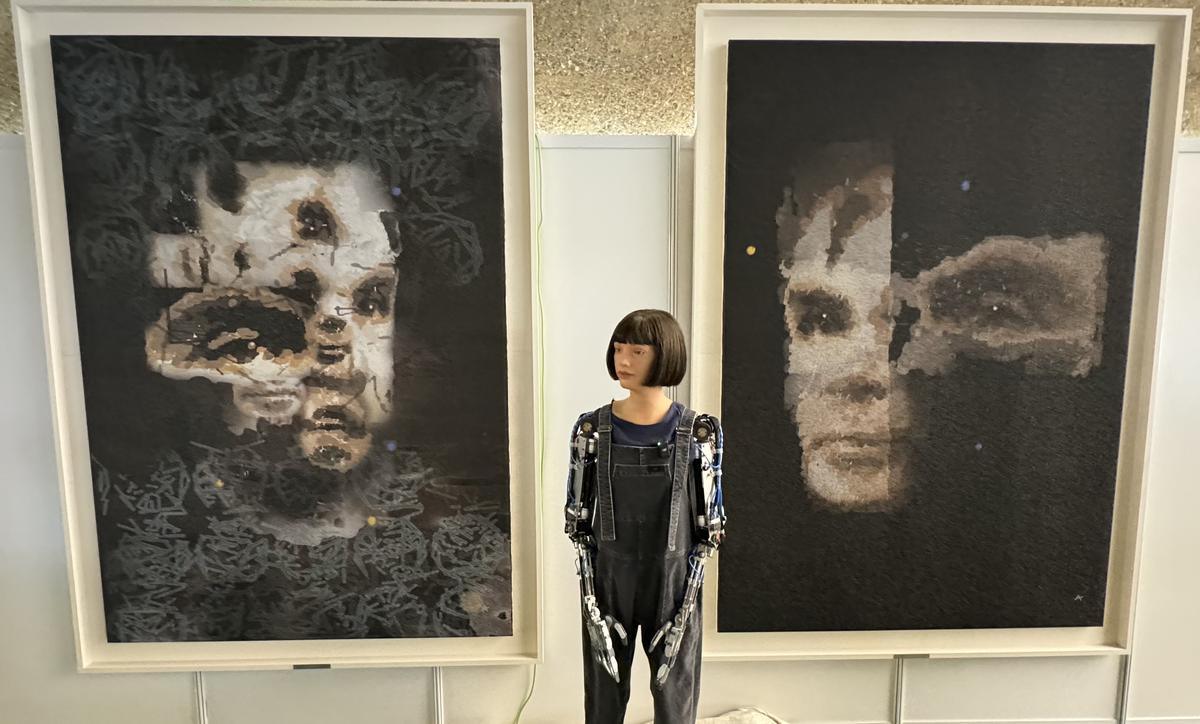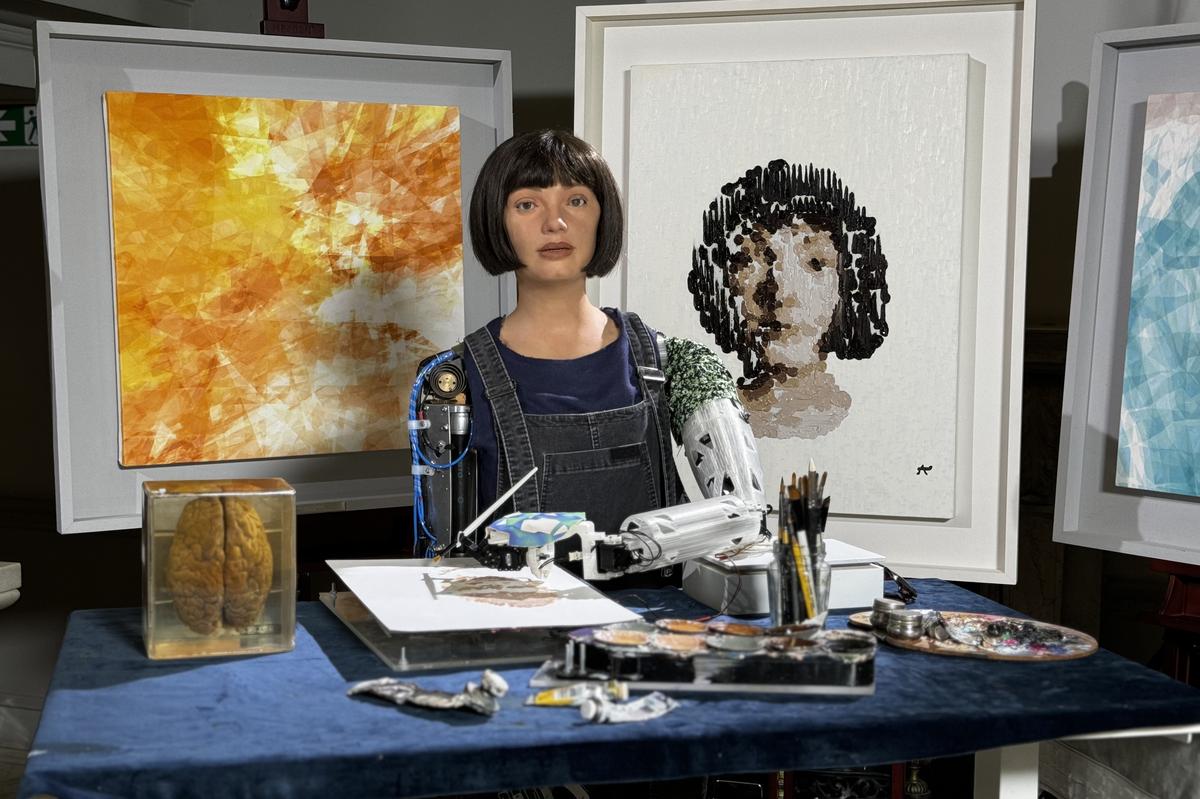A painting created by a robot named Ai-Da was sold at an art auction last Thursday for $1.08 million. The painting is the most expensive artwork ever sold that was created by a human-like robot.
The painting is called “AI God: Portrait of Alan Turing”. Mr. Turing was an English math genius who came up with many of the important ideas that led to modern-day computers. He was an important part of the early thinking about Artificial Intelligence (AI).
The portrait of Mr. Turing was sold at an auction at Sotheby’s in New York. It was expected to sell for $120,000 to $180,000. But there was a lot of interest, and it wound up selling for far more.

(Source: Copyright 2024 © Ai-Da Robot Studios.)
The painting is the work of Ai-Da, a human-like robot that’s able to paint and take part in conversations. The idea for Ai-Da came from Aidan Meller, an Englishman who used to run an art gallery. He worked with a group of nearly 30 people to build and program Ai-Da.
Ai-Da’s name is clever – the first part of the name is “AI”. But Ai-Da was also named after Ada Lovelace, a famous mathematician in the 1800s. Ms. Lovelace is considered the world’s first computer programmer.
Ai-Da is designed to look like a woman with short black hair. Cameras allow the robot to “see”. Ai-Da paints with a robotic arm which can hold a pen or paintbrush. Using AI tools similar to ChatGPT, Ai-Da is also able to talk. This allows the robot to do interviews and even answer questions about its artwork.
😕
This image has not been loaded because of your cookie choices. To view the content, you can accept 'Non-necessary' cookies.
Ai-Da is a human-like robot that’s able to paint and take part in conversations. The idea for Ai-Da came from Aidan Meller, who worked with a group of nearly 30 people to build and program Ai-Da. Above, Mr. Meller and Ai-Da in July.
Mr. Meller says Ai-Da doesn’t just paint whatever it’s told to paint. Before the robot begins painting, it talks with its human helpers about what the subject should be.
Before the painting of Mr. Turing, Mr. Meller says they discussed the idea of using “AI for good”. Ai-Da chose Mr. Turing as a subject because of the important part he played in developing computers and AI. Ai-Da based its portrait off of a picture of Mr. Turing it had “seen” with its cameras.
Ai-Da then used its painting arm to make 15 paintings of different parts of Mr. Turing’s face. Each painting took six to eight hours to complete. These paintings are about the size of two pieces of notebook paper laid side by side. That’s the largest Ai-Da’s arm can manage.

(Source: Copyright 2024 © Ai-Da Robot Studios.)
Finally, Ai-Da chose three of the paintings to combine into the final portrait. Once the portrait was finished, a special 3D printer was used to expand Ai-Da’s smaller artwork into the full-sized painting.
Not everyone thinks of Ai-Da as a real artist. But Mr. Meller says that’s part of the reason the robot exists. He says Ai-Da is a “kind of mirror” of the future. He believes Ai-Da’s art can help make people think about how AI is changing the world.
And what about the money? Mr. Meller says his team will use the money from the sale to turn Ai-Da into an even better robot artist. “She is constantly being updated,” he says. “She is on her third painting arm already.”
Did You Know…?
Ai-Da’s painting is not the first work of AI art to sell for a large amount of money. In 2018, a painting created by French students using an AI program sold for $432,500.
